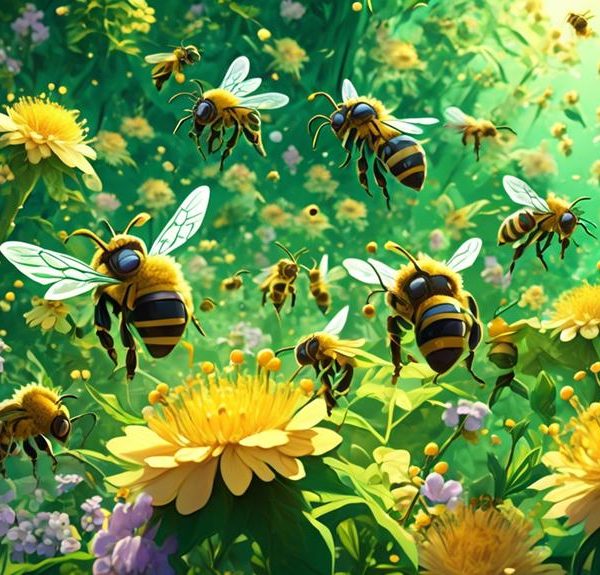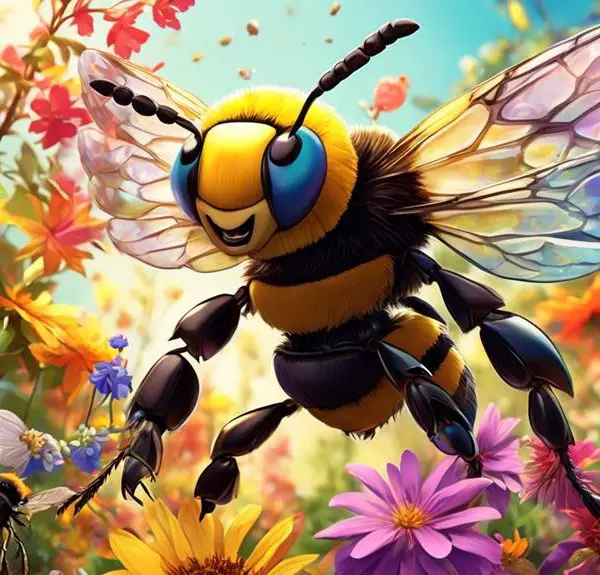Amid buzzing blossoms, discover the intricate relationship between carpenter bees and your garden flowers – friend or foe?
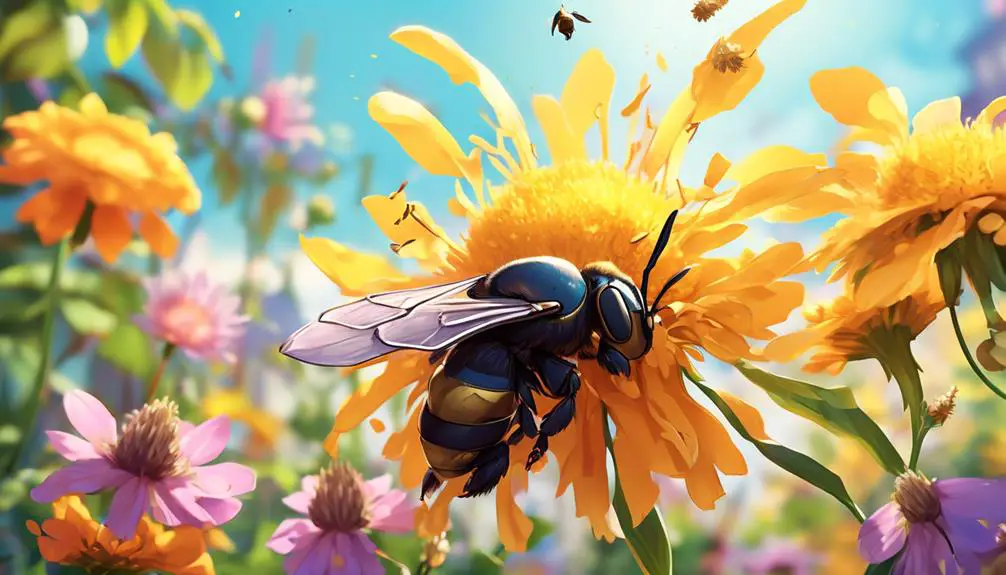
Do Carpenter Bees Kill Flowers
Bountiful blossoms buzz with bees, but don't be too quick to swat them away. You've likely noticed those large, lumbering, black and yellow carpenter bees hovering around your garden, but have you ever wondered if they're friend or foe to your flowers?
It's a common question that garners quite a bit of attention, especially when the spring season has your garden in full bloom. You may be surprised to learn that these buzzing creatures have a more complex relationship with your petunias and pansies than you might think.
Stick around, and we'll dig into the details.
Key Takeaways
- Carpenter bees, especially females, engage in nectar robbing by creating slits at the base of flowers to access nectar, bypassing the pollen-covered parts of the flower.
- Nectar robbing can impact seed production and cause aesthetic harm to flowers, but it can also promote natural selection and flower adaptation.
- While male carpenter bees can still cross-pollinate as they move from flower to flower, their nectar robbing behavior may not be as beneficial as honeybees' pollen transfer.
- Carpenter bees can contribute to pollination and plant diversity in gardens, but they may also cause damage to wooden structures and flower buds.
Understanding Carpenter Bees
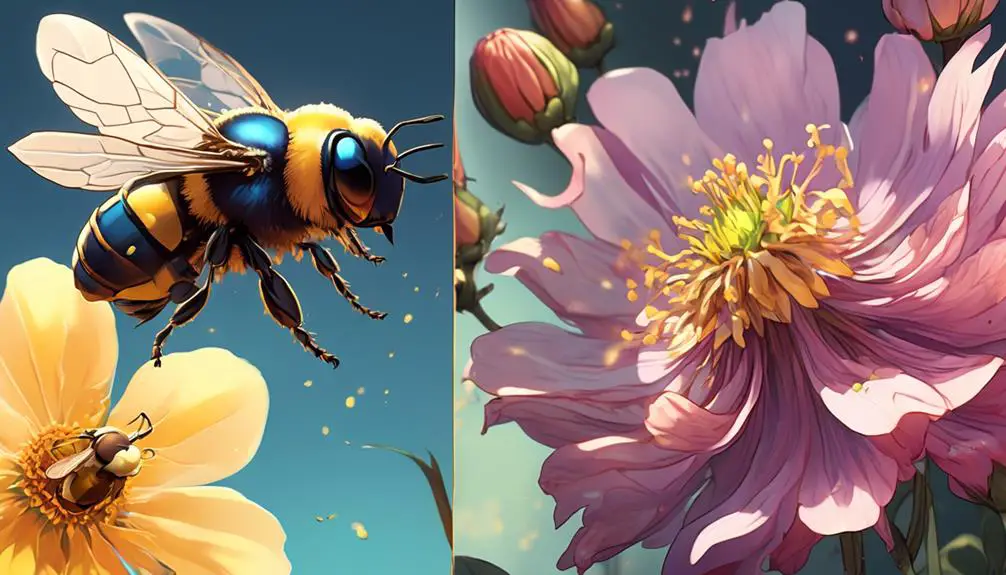
To fully grasp the impact of carpenter bees on flower damage, you first need to understand these insects' unique biology and lifecycle. Carpenter bees, belonging to the genus Xylocopa, are solitary insects that exhibit fascinating behaviors. Unlike honey bees, they don't live in hives but prefer to bore into wood, creating tunnels for nesting and reproduction.
You'd be interested to know that carpenter bees are sexual dimorphic, meaning males and females have distinct appearances. Males, though larger with a yellow spot on their face, are harmless. They don't have a stinger, but they're territorial and may hover around you. Females, on the other hand, can sting but are less aggressive unless provoked.
Carpenter bees' lifecycle begins when the female lays her eggs in the wooden tunnels she's bored. These eggs hatch into larvae, which then pupate and transform into adult bees. This lifecycle, from egg to adult, takes approximately seven weeks.
It's crucial to note that carpenter bees are critical pollinators, particularly for open-faced flowers. However, their unique method of 'buzz pollination' can sometimes lead to flower damage, a topic we'll delve into next.
Carpenter Bees Vs Honeybees
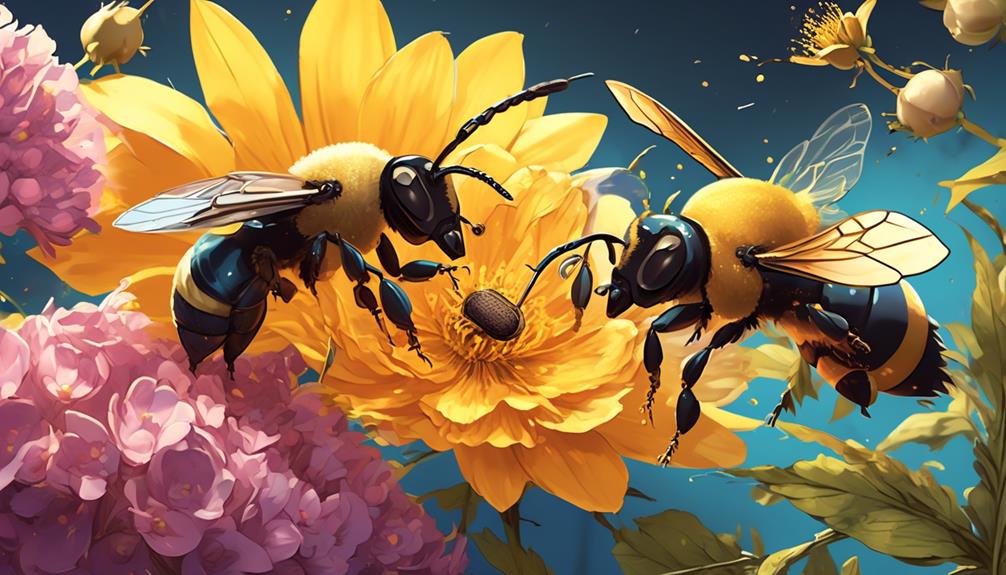
While you might often confuse carpenter bees with the more familiar honeybees, they're distinctly different in both physical attributes and behaviors. Let's delve a little deeper into these differences to clear up any confusion you might have.
Carpenter bees are larger and possess a shiny, black abdomen, unlike honeybees, whose abdomen is fuzzy and yellow-striped. Behaviorally, carpenter bees are solitary insects, each female digging her own nest, while honeybees live in complex, social colonies.
In terms of interaction with plants, carpenter bees aren't as beneficial as honeybees. They often 'cheat' flowers by cutting a hole in the flower's side to access nectar, bypassing the pollen. Honeybees, on the other hand, play a crucial role in pollination, transferring pollen grain by grain.
Let's tabulate these differences:
– | Carpenter Bees | Honeybees |
|---|---|---|
Size | Larger | Smaller |
Color | Shiny, black | Fuzzy, yellow-striped |
Social Structure | Solitary | Colonial |
Interaction with Flowers | Often 'cheat' flowers | Crucial in pollination |
Carpenter Bees' Relationship With Flowers
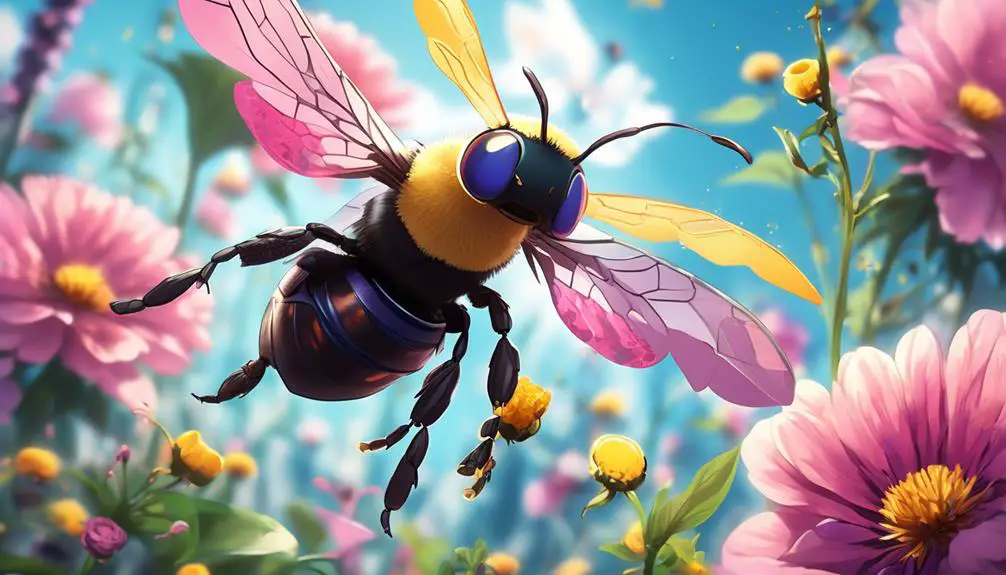
In your garden, you might notice the unique relationship carpenter bees have with flowers, a relationship that significantly differs from the typical pollinator-flower interaction. Unlike honeybees that collect nectar through the flower's entrance, carpenter bees, especially females, create a slit at the base of the flower to reach the nectar, a behavior known as 'nectar robbing.'
This nectar robbery doesn't always mean disaster for your flowers. While it's true that this method bypasses the pollen-covered parts of the flower, and consequently, the pollination process, it's not entirely harmful. Male carpenter bees, which don't exhibit nectar robbing behavior, can still cross-pollinate as they move from flower to flower in search of mates.
However, this nectar robbing might impact the plant's seed production, as it reduces the chances of successful pollination. Besides, the physical damage to the flower from the slit can cause aesthetic harm. It's also worth noting that nectar robbing can promote a form of natural selection, where flowers adapt overtime to discourage this behavior.
Impact of Carpenter Bees on Gardens
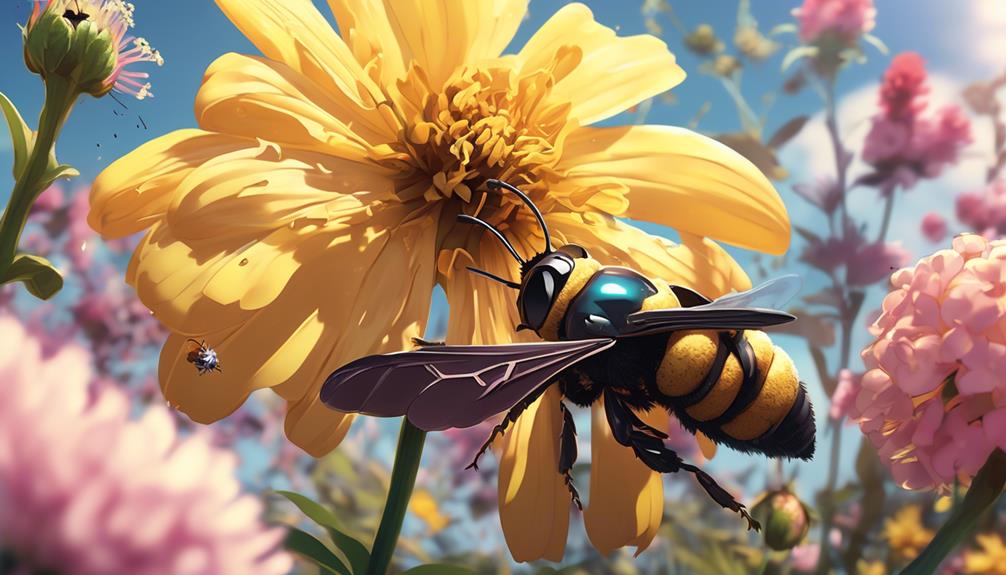
Assessing the broader effects of these carpenter bee behaviors, you should consider their overall impact on your garden's health and aesthetics. Carpenter bees are known for drilling into wood to create nests, but their interactions with plants may also influence your garden's wellbeing.
Here's a table detailing potential effects:
Impact | Positive/Negative | Explanation |
|---|---|---|
Pollination | Positive | Carpenter bees can pollinate your flowers as they collect nectar. |
Nesting | Negative | They may drill into wooden structures, potentially causing damage. |
Flower Damage | Negative | Some species can cut into flower buds to access nectar, damaging blooms. |
Predation | Negative | Carpenter bees are prey to certain birds, which may lead to an increase in bird activity in your garden. |
Plant Diversity | Positive | Their pollination can contribute to plant diversity in your garden. |
You'll notice that their impact isn't entirely negative. Yes, they can damage wooden structures and certain flower buds, but they're also active pollinators that contribute to plant diversity. In conclusion, understanding their behaviors can allow you to balance maintaining your garden's aesthetics with supporting local ecosystems.
Managing Carpenter Bees Naturally
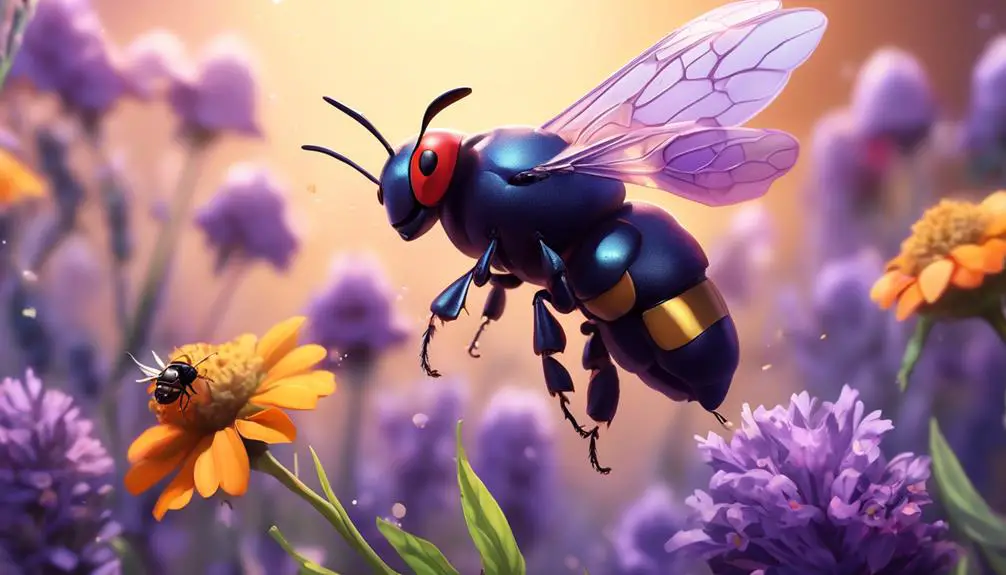
To manage carpenter bees naturally, you'll need to understand their behaviors and adopt sustainable, non-harmful strategies that can deter them from causing damage. Carpenter bees, like all creatures, play a role in our ecosystem and outright extermination isn't the best solution.
Carpenter bees prefer to nest in soft, unpainted wood. Thus, painting or varnishing your outdoor wood structures can make them less inviting. This is a simple, non-toxic method that discourages nesting without harming the bees or the environment.
Next, consider natural repellents. Citrus peel extract, for example, is known to deter carpenter bees. You can make a homemade spray by boiling citrus peels in water and applying the cooled solution to affected areas. It's an effective, environmentally friendly deterrent.
Lastly, use physical barriers. Installing fine mesh or netting around your garden structures can prevent carpenter bees from accessing potential nesting sites.
Conclusion
In sum, carpenter bees aren't your gardens' enemies. Unlike honeybees, they don't destroy flowers but play a crucial role in pollination. While they can cause some structural damage, their impact on your garden's health is overwhelmingly positive.
Manage them naturally for a balanced ecosystem. Remember, understanding and respecting these hardworking creatures is key to maintaining harmony in your outdoor spaces.

